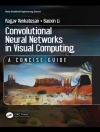There are a number of different system concepts that have gained much relevance in the area of embedded systems over the past couple of years. First, there is the classic concept of embedded systems where the focus is on control systems for physical processes. Secondly, the notion of pervasive computing has evolved, where the vision foresees everyday objects having some form of computation capacity and, in most cases, sensing and communication facilities. Thirdly, the notion of wireless sensor networks has arisen, where small computing devices are able to sense their environment and cooperate in order to achieve a well-defined goal.
These three types of quite diverse systems share a lot of commonalities on the one hand and, on the other hand, have some complementary aspects in common that make a combination of these systems into a coherent system vision promising. In particular, the important notions of control, heterogeneity, wireless communication, dynamic and ad-hoc nature and cost are prevalent to various degrees in each of these systems.
A future system concept needs to combine the strong points of all three system concepts in at least these functional aspects. It has to provide support for the control of physical processes like today’s embedded systems do, have as good support for device heterogeneity and spontaneity of usage as required by pervasive and ubiquitous computing approaches, and has to be as cost efficient and wirelessly agile as wireless sensor networks are. These new systems consist, therefore, of individual entities or objects that jointly strive to reach a common goal, which will typically be a goal in sensing or control, and are dynamically and loosely federating themselves for cooperation, taking care not to overtax their available resources.
This book presents a roadmap to these concepts which are summarized as cooperating objects.
Table des matières
Executive Summary.- Purpose of this Document.- Introduction to Cooperating Objects.- State of the Art in Cooperating Object Research.- Visions for Innovative Applications.- Market Analysis.- Research Roadmap.- Predominant Work Areas.- Summary and Conclusions.












